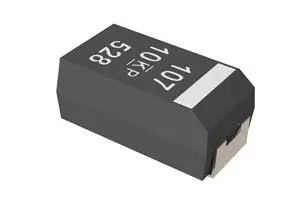source: Kemet news
GREENVILLE, S.C., July 11, 2017 (GLOBE NEWSWIRE) — KEMET Corporation (NYSE:KEM), a leading global supplier of electronic components, has announced the extension of its T598 range of polymer electrolytic capacitors with new higher voltage rated parts.
The addition of 35V devices for capacitance values of 22 and 33 microfarads represents a first-to-market for KEMET. The new AEC-Q200 qualified parts extend the range of automotive applications in which the benefits of polymer electrolytic devices can be utilized, and provide a product capable of meeting voltage transient critical requirements.
In common with other parts from the T598 range, KEMET’s new higher voltage polymer electrolytic capacitors offer inherent volumetric efficiency, providing a space-saving solution that helps miniaturize automotive power circuit designs. The key performance advantage of T598 devices is ultra-low equivalent series resistance (ESR), which minimizes energy losses and capacitor self-heating, thus allowing the devices to handle large ripple currents without excessive thermal stress. In addition, the polymer capacitor’s ESR has a low temperature coefficient, which helps to ensure stable performance over its -55 to +125 degrees Celsius operating temperature range.
The capacitor’s roll-off frequency is also increased, enabling devices to maintain capacitance up to higher frequencies than MnO2 devices. Compared to liquid electrolytic-based devices, KEMET’s polymer electrolytic parts have very long operational life and are well-suited for use in challenging environmental conditions such as high humidity and high temperature typical of automotive applications.
Commenting on the announcement of the addition of new 35V parts to the T598 range, Dr. Philip Lessner, KEMET Senior Vice President and Chief Technology Officer, said, “Our fully-qualified T598 family of devices already brings the important benefits of space efficiency, reliability in tough conditions and longevity to designers of automotive power modules. Now, with the announcement of higher voltage parts, and in a time of rapid growth for vehicle electrification, we can address the needs of an even greater number and diversity of automotive modules.”


































